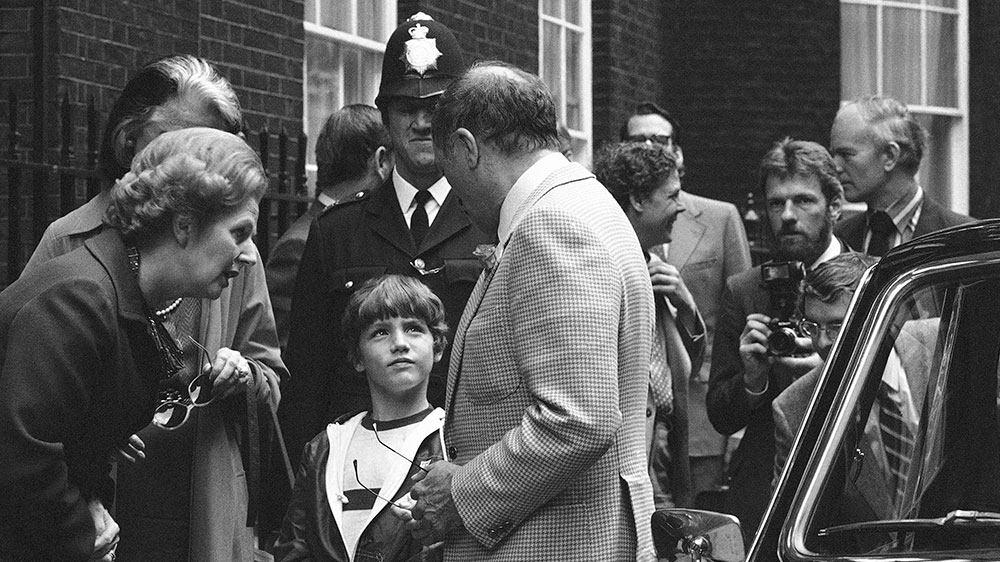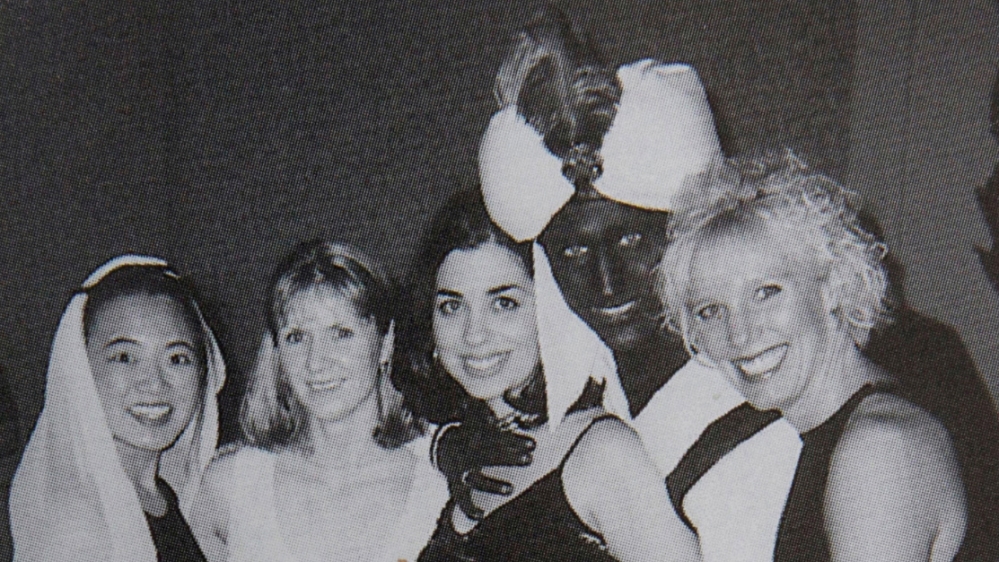He was the ‘change’ candidate in 2015, but he’s recently been rocked by scandals including revelations he wore blackface
![Liberal leader and Canadian Prime Minister Justin Trudeau speaks at a news conference after an English language federal election debate [Carlos Osorio/Reuters]](https://www.aljazeera.com/mritems/imagecache/mbdxxlarge/mritems/Images/2019/10/9/d44034a6ae3a440fb8438949f64cecc8_18.jpg)
Canadian Prime Minister Justin Trudeau swept to power in 2015 on a campaign of idealistic promises, surprising political rivals with a majority Liberal government and ending nearly 10 years of Conservative leadership. It was one of the biggest political victories for the Liberals in the country’s history.
Four years later, he faces a tough election with a late surge by further-left NDP leader Jagmeet Singh threatening to snatch seats from the Liberals, and polls showing Trudeau in a close race with Conservative leader Andrew Scheer.
Trudeau’s political scandals, ethics violations and multiple incidents of blackface have cracked his idealistic, avowedly feminist veneer and allowed critics to go after the former teacher.
Rise to power
As a child, Trudeau was best known as the eldest son of former Prime Minister Pierre Elliot Trudeau.
His first moment of national fame was in 2000, when he delivered his father’s eulogy. He was 28, and the event was broadcast nationally. He completed two bachelor degrees, and taught French, math and drama at public and private schools. In 2007, he acted in a World War I documentary, playing a Canadian soldier with whom he shared a family connection.

In 2007, Trudeau entered politics by running in Montreal riding Papineau, a Liberal riding for 50 years that was lost in 2006 to the Bloc Quebecois. Critics said he was using his family name as a free pass into politics. “I am carrying the Trudeau name, yes. I am also carrying my own name,” he told reporters. In 2008, he won back the district for the Liberals, prompting chatter that he could one day be prime minister.
He was re-elected in 2011, but in the same election, charismatic New Democratic Party (NDP) leader Jack Layton led his party to a huge victory, carrying them from third place to second place to become Canada‘s official opposition. Consequently, the Liberals suffered a huge defeat, falling from 77 seats in parliament to only 34. The catastrophic loss prompted Liberal leader Michael Ignatieff’s resignation.
Trudeau’s name was tossed around as the next leader. In 2012, he was the centre of a national spectacle when he won a charity boxing match against a Conservative senator. A poll soon after found Trudeau was a favourite for Liberal leader. In fall 2012, he launched his leadership race. He won with 80 percent of the vote, setting him up to go head to head with Conservative Prime Minister Stephen Harper in the 2015 election.
Historic win
Harper ran on a platform of “proven leadership” and protecting the economy. But he had rolled back environmental protections, introduced an act to ban “barbaric cultural practices”, proposed a hotline for people to report these practices, and said women could not wear the niqab while taking the oath of citizenship. Harper had held power for nearly a decade, and Canadians appeared tired of him.
In 2015, Trudeau ran on a slogan of “Real Change (Now)”. He appealed to Canadians as a hope and change candidate, similar to Barack Obama in the United States. At 43, he was seen as the youthful antidote to Harper, then 56.
![Canada's Prime Minister Justin Trudeau [REUTERS]](https://www.aljazeera.com/mritems/Images/2016/9/25/76755c50de4f4f9a8fb334f518832f9a_18.jpg)
Trudeau promised to legalise cannabis, expand public transit infrastructure, increase family reunification for immigrants, spend more than a billion dollars to help 125,000 young people find jobs and he made environmental pledges like a tanker traffic ban on the north coast of British Columbia (BC). He also made big promises to indigenous people, including increasing funding for First Nation‘s education, solving the drinking water crisis in First Nation communities within five years, and renewing the nation-to-nation relationship with indigenous people that Canada was built on. He also promised to reform Canada’s electoral system, which critics say forces voters to choose a candidate who can win versus a candidate they actually agree with.
On October 19, 2015, Trudeau led his party to a historic victory, winning 184 of 338 seats in Parliament, a solid majority. It was the largest ever increase in seats in Canadian history. On Canada’s east coast, they won all 32 ridings, compared with the 11 they held after the 2011 election. They also made major gains in Ontario. It was called the “Red Tide”, or the “Liberal Tide”. The Conservatives formed the opposition with 99 seats.
Scandals
Two days after his win, Trudeau declared himself a feminist. After he was sworn in, he famously appointed a gender-balanced cabinet for the first time. Asked why, he simply said, “because it’s 2015”.
In his four years as prime minister, Trudeau has welcomed refugees to Canada in huge numbers (although he later tightened refugee rules), legalised cannabis, held an inquiry into the thousands of missing and murdered indigenous women in Canada (the inquiry was mired with resignations and met with criticism from families), started the Canada Child Benefit to offer monthly payments to families raising children (he has now promising to increase those payments) and put a price on carbon for individuals and large emitters.
His feminist image took a hit during the resurgence of the #MeToo movement. In 2018, an editorial that had been published in 2000 in a local BC newspaper resurfaced, accusing Trudeau, not in politics at the time, of groping a female reporter at a music festival. According to the accuser, Trudeau apologised the day after the incident. Responding in 2018, Trudeau said he did not remember any negative incidents, but later said he did apologise and while he did not feel he acted inappropriately he respected the “fact someone else might have experienced that differently and this is part of the reflections that we have to go through”.
In early 2019, news broke that Trudeau had pressured his attorney general not to prosecute mammoth Quebec company SNC-Lavalin that was facing a criminal trial over corruption and fraud allegations. Attorney General Jody Wilson-Raybould testified that the four-month pressure campaign from the Prime Minister’s Office raised “serious red flags”. Trudeau kicked her out of caucus, he said because she recorded a phone call. A report over the summer found Trudeau had broken ethics rules in handling SNC-Lavalin. Trudeau has maintained there was no undue pressure and responded by saying he “can’t apologise” for trying to protect Canadian jobs.

Shortly after the 2019 campaign kicked off, Time Magazine published a photo from Trudeau’s teaching days in which he painted his face and hands black in a racist portrayal of Aladdin at an Arabian Nights-themed party. Several more images emerged of Trudeau in blackface on different occasions. He apologised and said he could not remember how many times he had worn blackface.
As the election comes to a close, Trudeau is telling voters they must re-elect him to “keep moving forward” and prevent a Conservative government from seizing power. But his idealist image has been tarnished in the eyes of many, and he’s facing attacks from the left and right.
What his critics say
Climate change has emerged as a major issue for Canadian voters, and each party has put forward emission reduction targets and climate plans. The NDP and Green parties have criticised Trudeau for not having an ambitious enough climate plan, and have slammed his government for buying an oil pipeline in BC for $4.5bn Canadian dollars ($3.4bn USD) that he plans to expand, a move that will increase GHG emissions from the Alberta oil sands. Meanwhile, Conservative leader Andrew Scheer has called Trudeau’s carbon price a “tax” and said he would repeal it if elected. Scheer critics have pointed out that it is not a tax as there is a rebate.
Scheer has repeatedly criticised Trudeau for breaking ethics rules, wearing blackface and not being a real feminist. Meanwhile, NDP leader Singh has said Trudeau broke his promise by not implementing electoral reform.
SOURCE: AL JAZEERA NEWS


